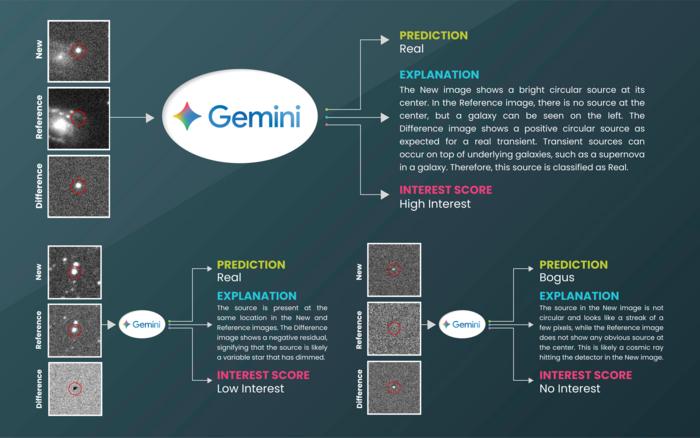How can artificial intelligence (AI) help astronomers identify celestial objects in the night sky? This is what a recent study published in *Nature Astronomy* hopes to speak to an international team of researchers who have been investigating the potential for using AI to conduct astrophysical studies of celestial events, including black holes consuming stars or even stars exploding themselves. This study has the potential to help astronomers use AI to improve the field by reducing the time and resources traditionally used to scan the night sky.
For the study, researchers tested Google’s Large Language Model (LLM), Gemini, on three night sky datasets: Panoramic Survey Telescope and Rapid Response System (Pan-STARRS), MeerLICHT (Dutch for “more light”), and Asteroid Terrestrial-impact Last Alert System (ATLAS). The goal was to determine if LLMs could achieve the same level of accuracy and efficiency as the datasets listed above while presenting Gemini with three sets of images.
The researchers used specific prompts for Gemini to analyze 15 examples with instructions to classify them as “No Interest,” “Low Interest,” and “High Interest” for celestial artifacts, variable stars, and explosive events, respectively, the full repository of examples, prompts, and instructions found at https://github.com/turanbulmus/spacehack. The researchers then conducted a follow-up analysis six months later, with Gemini updated with new algorithms. Ultimately, the researchers found that Gemini achieved accuracy for ATLAS, MeerLICHT, and Pan-STARRS of 91.9, 93.4, and 94.1 percent, respectively.
“I have worked on the problem of rapid processing of data from sky surveys for more than 10 years, and we are constantly faced with the need to eliminate real events from false signals during data processing.” said Dr. Stephen Smarttprofessor of astrophysics at the University of Oxford and co-author of the study. “We have spent years training machine learning models and neural networks to perform image recognition. However, the LLM’s accuracy in recognizing sources with minimal guidance rather than task-specific training was remarkable. If we can scale this to scale, it could be a total game-changer in the field, another example of AI enabling scientific discovery.”
This study comes as AI is rapidly contributing to astronomy and planetary science through myriad applications, including exoplanet detectionanalyzing planetary surfaces and astronomical datasets, identify supernovaefast radio bursts, gamma-ray bursts and gravitational waves, citizen science, theoretical modeling and operation of telescopes.
An example of how AI is used for astronomy includes the discovery of Kepler-90ilocated approximately 2,767 light years from Earth and is the eighth planet discovered in this system. While Kepler-90i is designated as a super-Earth with a mass of about 2.3 times the mass of Earth, the temperature of its rocky surface is far too hot to support life as we know it. Additionally, all of the planets in the Kepler-90 system orbit within its star’s habitable zone, meaning they all likely have surfaces or atmospheres too hot to support life as we know it. An example of how AI is used for planetary science includes the study of earthquakes and how travel of seismic waves through the interior of Mars in a very different way than previously thought.
Future applications of AI in astronomy and planetary science include space weather forecastautonomous robots on the Moon and Mars, and even the use of AI on future crewed missions to the Moon and Mars to help astronauts make more informed decisions. Therefore, this recent study not only demonstrates the growing applications of AI for astronomy and planetary science, but also demonstrates how non-scientists can use free online tools like Gemini to achieve groundbreaking science.
How will AI help improve astronomy and identify celestial events in the years and decades to come? Only time will tell, and that’s why we do science!
As always, keep doing the science and keep looking!










